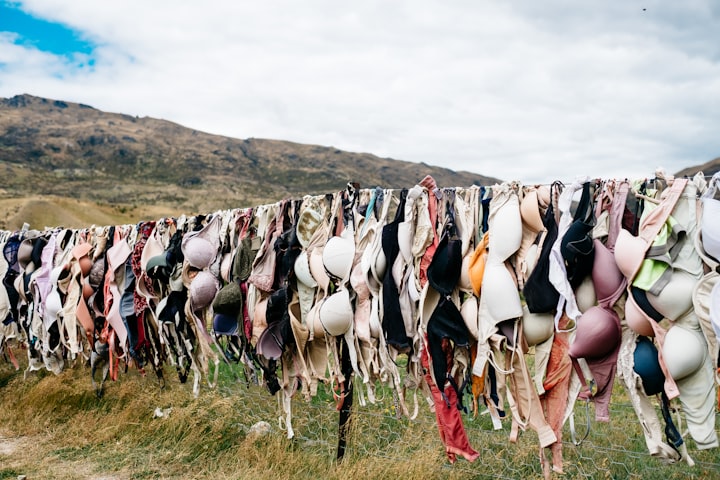Breast Implants and Cancer
Can breast implants cause cancer?

The safety of breast implants has always been a hot topic, with scientists, surgeons, and patients all presenting conflicting information. Silicone-filled breast implants were first restricted for use in the USA in 1992 when the FDA restricted the use of silicone gel-filled breast implants, for reconstruction after mastectomy, correction of congenital deformities, or replacement of existing implants.
What I have always considered very strange, regarding the link between silicone-filled breast implants and silicone illness or breast implant associated (BIA) illness, is the lack of consistency regarding the permitted use of silicone-filled implants, in the USA. Most significantly there didn't seem to be any concern about the silicone shell that was proven to shed small particles of silicone and is used for all saline-filled breast implants. Why would only the silicone inside the implant cause health issues, if the culprit was silicone then surely the silicone particles from the implant shell would also cause the symptoms, making the restricted use completely infallible in my opinion?
Secondly, why were silicone-filled breast implants considered to be 'low risk' if being used for reconstructive purposes? Surely if there are doubts regarding safety, then using this style of implants to reconstruct breasts, after breast cancer surgery is morally incomprehensible?
Countries in Europe that use silicone, filled breast implants continued to do so after the FDA restricted their use. The general consensus, based on the research, was any link to silicone illness or breast implant associated (BIA) illness was negligible and could not be substantiated with scientific evidence.
Following numerous scientific studies on 18 Nov 2006 the FDA ended a 14-year virtual ban on silicone-gel filled, breast implants and permitted the use of silicone-gel filled, breast implants for cosmetic purposes.
This all changed on July 24th, 2019 when Allergan withdrew all of their Biocell saline-filled and silicone-filled textured breast implants and tissue expanders from the worldwide market, due to a link with Breast Implant-Associated Anaplastic Large Cell Lymphoma (BIA-ALCL).
For the first time, an indisputable link between breast implants and cancer was established and recognised by both plastic surgeons and oncologists. Yet this was not related in any way to the filling and the risk was the same with both, saline and silicone-filled implants. In fact, the first diagnosed case of BIA-ALCL in 1997 was related to saline-filled, breast implants. The risk is associated with the texture of the implant shell, the more highly textured the greater the risk with the highest number of diagnosed cases of BIA-ALCL being associated with Allergan textured breast implants and tissue expanders.
The recent link between BIA-ALCL and breast implants is a form of rare and highly treatable type of non-Hodgkin lymphoma (NHL). The link is in no way related to breast cancer or any other highly disputed symptoms that have been associated with breast implant associated (BIA) illness.
To date, a total of 779 worldwide have been confirmed as of September 3, 2019.
FDA Information on individual cases
Who is held accountable?
On July 30th, 2019, Allergan announced it would cover the costs of new implants for people with Biocell implants who want to replace them. The program runs until July 24, 2021.
I really don't feel this is good enough, I also have Allergan Biocell, highly textured, breast implants and would expect all my costs to be covered, plus additional compensation if I wanted to have my implants exchanged or removed. I have chosen to keep my implants as I don't feel the risk justifies the risks of revision surgery, however, this should not be a choice made due to financial reasons. For any woman who is struggling with anxiety and wants their implants exchanged or removed due to the link to BIA-ALCL then I think it is only correct that Allergan should cover these costs and compensate for the stress and suffering this has caused.
Your legal rights
Do not become overwhelmed by legal jargon and be extremely careful if you sign any paperwork relating to Allergan covering the costs of replacing your Biocell breast implants.
In the UK Leigh Day is seeking recovery from Allergan of the cost of removal of the implants and compensation for personal injury, distress and any consequent financial loss. It is the first legal action in the UK by women who have BIA-ALCL and those who claim they were not properly warned about the risks from the implants.
In the USA in August 2019, Berger Montague PC, Sauder Schelkopf, And Mazie Slater Katz & Freeman, announced a class action lawsuit, against Allergan.
To Protect Women From The Increased Risk Of Cancer Resulting From Textured Breast Implants And For Economic Damages Aug. 19, 2019 /PRNewswire/ — The law firms of Berger Montague PC, Sauder Schelkopf, and Mazie Slater Katz & Freeman announce that a nationwide class-action lawsuit has been filed against the medical device manufacturer Allergan to protect women with Allergan’s textured breast implants from the increased risk of breast implant-associated anaplastic large cell lymphoma (BIA-ALCL), which has now been associated with Allergan’s BIOCELL textured breast implants. The case is Jane Doe I, et al. v. Allergan, Inc., et al., No. 2:19-cv-16784 (D.N.J.)
In Canada in May 2019, Thomson Rogers and Rochon Genova LLP issued a class action on behalf of Canadians who were implanted with breast implants manufactured and distributed by Allergan plc and several of its affiliates.
Merchant Law Group LLP has also launched Canada-wide class action litigation against Allergan, the manufacturer of Biocell textured breast implants, seeking financial compensation on behalf of all Canadian women who have been diagnosed with anaplastic large cell lymphoma (BIA-ALCL) which is a serious but rare type of non-Hodgkin lymphoma that affects the immune system (and may develop many months or years after a breast implant procedure) as a result of receiving Biocell textured breast implants.
You may have a lawsuit if you have Allergan implants and have been diagnosed with BIA-ALCL lawsuit claims can be for one or more of the following:
- Defective design and/or manufacturing
- Failure to warn
- Negligence
- Punitive damage
- Attorney fees
Compensation for these claims can involve medical expenses, lost wages, and pain and suffering
My conclusion
Allergan should be doing more and I am interested in following the lawsuits and finding out if Allergan is forced to pay compensation.
You can check if your breast implants are Allergen by consulting your surgeon, who should have a record of the manufacturer and style of implants used.
After extensive research, I have chosen to keep my implants. My decision is based on my trust in my consultant and his ethics and is in no way influenced by costs.
The FDA is not recommending the routine removal of these or other types of breast implants in patients who have no symptoms.
Guidelines for maintaining your breast shape after a breast augmentation
It can be very tempting to go bra-less after having a successful breast augmentation. Why wear a bra if your breasts look perky without one?
The first three months after a breast augmentation
Breast implants need time to settle into the pockets and the shape will change and normally your breasts will drop slightly over the 3 month period after a breast augmentation. Wearing a non-underwired bra is essential to support your skin and breast tissue as the implants settle into the correct position.
Three months and ongoing after a breast augmentation
Wearing a non-underwired bra is recommended to help support your implants and prevent implant misplacement. You will also help to reduce the impact of aging which can cause your breasts to sag, in the same way, natural breasts will if you wear a non-underwired bra. You may find that if you have opted for the submuscular (below the muscle) placement for smaller, breast implants (under 500cc) you do not need to wear a bra as your own muscle acts as an internal bra; however, I would highly recommend asking your plastic surgeon for their advice before choosing to go braless.
I opted for subpectoral placement (above the muscle) for my breast augmentation and always wear a non-underwired bra as there is no internal support for the breast implants.
Are breast implants lifelong devices?
Previously it was recommended that breast implants should be exchanged for new ones every 10 years. This was partially due to manufacturer's warranties expiring after 10 years to limit their risk of lawsuits due to breast implant failure, which increases slightly over time. The majority of breast implant manufacturers now provide lifetime warranties and the general consensus among plastic surgeons is that silicone-gel filled, breast implants are extremely durable and do not need exchanging unless implant rupture is detected or there is a concern that the silicone-gel might be leaking.
For more information about breast augmentation.
About the Creator
Annabelle Baugh
I enjoy researching and writing original content and have created numerous articles, broadcast scripts, and blog posts, for a range of clients, including legal, healthcare, and medical companies.






Comments
There are no comments for this story
Be the first to respond and start the conversation.